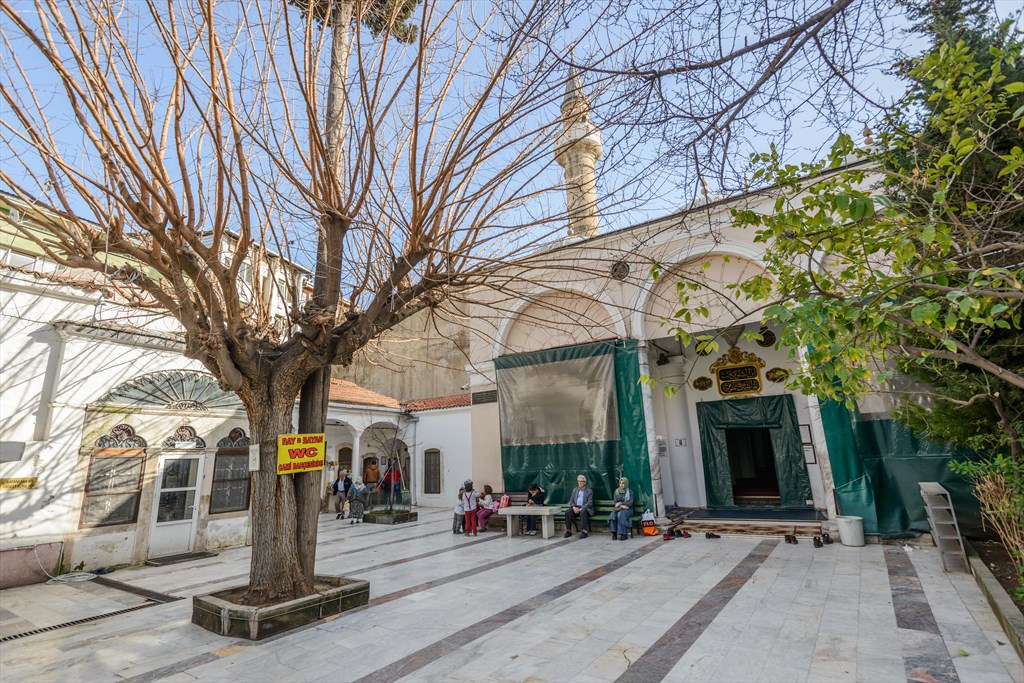Kemeraltı Mosque
Kemeraltı Mosque, located on the shore of the old inner harbor, was built by Yusuf Çavuşzade Ahmet Ağa. The information Evliya Çelebi gave about this mosque has been attributed to Kestanepazarı Mosque by mistake until today. The inscription of Kestanepazarı Mosque, which was - erroneously quoted from Evliya Çelebi - actually belongs to Kemeraltı Mosque.
Ahmet Ağa, or Kemeraltı Mosque, which Evliya Çelebi described as a new building at the beginning of the New Sunday, was built in 1078 Hijri (1667-1668) according to the inscription quoted by Evliya Çelebi. Evliya Çelebi wrote that some of the materials of this mosque, which he mentioned with great admiration in Seyahatname, were brought from Istanbul and that its minaret is made of green stone. He mentioned how the minaret was hardly seated because a part of the mosque's land was filled from the sea.
According to a endowment dated 3 November 1671, when the Kemeraltı Mosque was first built, it had a magnificent four-room madrasa and muezzin rooms next to it. Previously, the region where it was located was called Mûsa Bali Side, so it was also called by this name.
There is a white marble repair inscription dated 1882-1883 on the entrance door to the mosque's courtyard and 1812 on the entrance door to the main place. It is enough to raise your head a little to see the oldest birdhouse in Izmir, which was built during this repair. According to the main repair inscription on the left side of the sentence door, the mosque was called Ahmet Ağa Mosque at that time. It is thought that the changes in the mosque, which was built in an imposing order, were carried out in a repair dated 1902. Kemeraltı Mosque was last repaired by the General Directorate of Foundations in 2004.
Kemeralti Mosque, made of cut stone, has a single minaret and a single balcony. The minaret, which sits on a two-color cut stone and angular base, has a round body of cut stone in two colors. In front of the mosque, there is a three-domed last congregation place. The single dome that covers the main space is covered with lead and sits on an octagonal drum. There is a window on each side of the hoop. The mihrab is in the form of a deep niche. The interior of the mosque is decorated with pencil works dating back to the 18th century. These decorations were renewed based on old traces during the repairs made in the second half of the 20th century.

.jpg)
.jpg)
.jpg)



.jpg)
.jpg)
.jpg)


Comments
No comment left, would you like to comment?